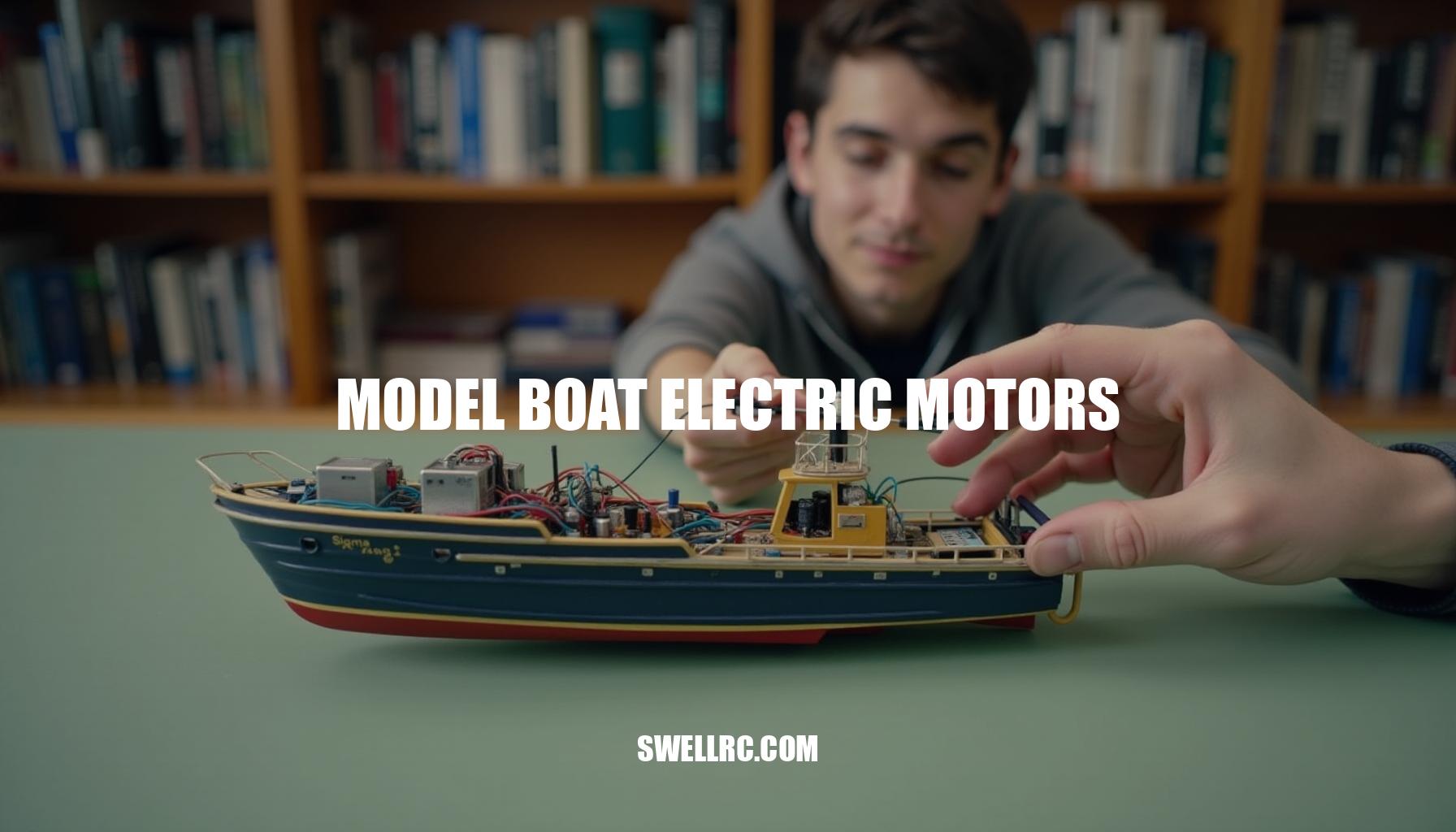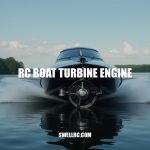Mastering Model Boat Electric Motors: A Comprehensive Guide
I fell in love with RC boating the first time I heard a hull skip across glassy water—and I’ve been chasing that perfect power setup ever since. Early on, I swapped motors like props: brushed, brushless, tiny outrunners, hulking inrunners. Some screamed, some sizzled, and a few finally clicked.
That journey taught me that model boat electric motors aren’t just “what spins the prop”—they’re the heart of the boat’s character, speed, range, and reliability. In this guide, I’ll break down motor types, how to size and match your setup, wiring and waterproofing essentials, and the simple tuning tricks that turn a good boat into a great one. After testing dozens of setups, I finally cracked the code—and I can’t wait to share it with fellow enthusiasts of RC boats and radio-controlled boats alike.
Whether you’re new to electric propulsion systems or looking to optimize your current build with the perfect RC hobby motors, this comprehensive overview will help you get the most out of your model boat electric motors for a thrilling and dependable experience on the water.
Understanding Model Boat Electric Motors — The Heart of Your RC Vessel
At their core, model boat electric motors convert electrical energy into rotational force that drives your propeller. Understanding the RC boat motor basics is essential, especially when weighing brushed vs brushless options. Brushed motors rely on physical brushes to switch current, offering simple, affordable designs with strong torque and RPM characteristics at lower speeds.
However, their efficiency is medium due to friction and brush wear. On the other hand, brushless motors use electronic commutation, resulting in higher efficiency, less maintenance, and superior speed performance. Additionally, modern marine motor cooling systems help brushless setups run cooler, boosting durability and runtime.
| Type | Efficiency | Maintenance | Speed | Durability |
|---|---|---|---|---|
| Brushed | Medium | Higher (brush wear) | Moderate | Good, brushes wear |
| Brushless | High | Low | High | Excellent (no brushes) |
I recall swapping a brushed can for a mid-Kv brushless motor on the same hull. The difference was remarkable: the boat accelerated onto plane faster, stayed cooler thanks to superior marine motor cooling systems, and gained several extra minutes of runtime—demonstrating why brushless motors have largely eclipsed small fuel engines among hobbyists. If you’re new to electric RC boat motors, explore general options here.
For enthusiasts passionate about scale realism, check out outboard-style units on small hulls here.
Brushless vs. Brushed Motors — The Testing That Changed Everything
After extensive hours of logging runs on two identical 28-inch hulls—one equipped with a brushed motor, the other with a brushless motor for RC boats—the results truly blew me away. When comparing motor efficiency and overall performance, the advantages of brushless technology became evident in several key areas:
- Acceleration: The brushless motor popped the hull on plane noticeably faster, delivering superior torque vs RPM characteristics that allowed for quicker responsiveness.
- Top speed: Operating on similar voltage and prop load, the brushless setup was 20–40% faster, showcasing better power delivery and efficiency.
- Heat management: Brushless motors ran cooler under sustained throttle thanks to optimal timing and the use of a cooling jacket, whereas brushed motors tended to run hot, impacting longevity.
- Runtime: Enhanced efficiency from the brushless system translated into longer runs from the same mAh capacity LiPo battery for RC boats, maximizing your time on the water.
- Maintenance: While brushed motors required regular brush and commutator care, brushless motors were virtually set-and-forget, reducing upkeep significantly.
It’s also important to note that battery compatibility plays a crucial role: higher-voltage LiPos invigorate both motor types, but the brushless motor scales more predictably with increased voltage and load. For those interested in a solid primer on sizing logic—covering elements like Kv ratings, volts, and prop load—the airplane community shares the same underlying physics.
This insightful explainer here carries over nicely to boat applications.
Power, Propulsion, and Performance — Finding the Perfect Balance
Understanding Kv, amps, volts, and torque and RPM settings is crucial for optimizing your model boat power setup. The Kv rating tells you the RPM per volt—higher Kv values mean more RPM but less torque per amp, which directly influences how your RC boat performs on the water. To get the best out of your system, consider these essential tuning tips I swear by:
- Match Kv to hull and prop: Lighter, smaller hulls typically thrive with higher Kv motors, offering higher RPMs, while heavier boats benefit from lower Kv units that provide greater torque for pushing larger props.
- Start conservative on prop size: Begin with a smaller prop and step up gradually.
Always log motor and ESC temperatures to ensure your waterproof RC boat ESC and motor stay within safe operating limits, preventing overheating.
- Use a quality, waterproof ESC: Choose an ESC with ample current headroom above your peak amp draw and program features like soft-start to protect your driveline from sudden torque shocks.
- Prioritize cooling: Implement water jackets, pickups, and maintain clean water lines. Check frequently for kinks or air leaks post-run to ensure efficient cooling and prevent heat buildup.
- For range-focused builds: Gear for efficiency by pairing a lower Kv motor with a modest propeller. Enhance your understanding of power management and signal optimization by visiting this guide, particularly when using a quality LiPo battery for RC boats.
- Cross-compatibility considerations: Many principles from airplane power systems apply here.
To better understand the relationship between motor geometries and Kv choices, check out this crossover primer.
- Balance your battery pack: Use high-quality LiPos with appropriate C ratings, keep wiring short, and employ low-resistance connectors to minimize voltage sag and maintain optimal power delivery.
Connection and Control — Wiring, Waterproofing, and Setup Essentials
Clean wiring and waterproofing are the difference between a hero run and a fried ESC—I learned that the hard way after a leaky hatch soaked my receiver. For anyone looking to master how to wire an RC boat, here’s the step-by-step process that’s kept my boats reliable and resilient against water damage and overheating:
- Layout: Place the battery near the center of gravity (CG), position the motor low and centered, ensure the ESC has proper cooling flow, and keep the receiver high and dry to avoid water exposure.
- Connections: Use quality connectors like bullet connectors between motor and ESC, polarized battery plugs to prevent reverse polarity, employ the correct gauge wire, and solder all connections well for durability.
- Polarity check: Always confirm polarity before the first power-up—reverse polarity kills electronics instantly, so double-checking saves expensive components.
- ESC setup: Program the ESC settings to match your battery cell count, adjust the timing correctly, turn off brake mode (common for most RC boats), and enable soft-start features; calibrate the throttle endpoints for smooth control.
- Waterproofing: Use a waterproof RC boat ESC or apply a conformal coating; seal your hatch tightly with foam tape, and secure all components with Velcro or straps to keep them in place during rough runs.
- Cooling: Implement a marine motor cooling system by plumbing a water pickup line to the ESC and motor jacket; test water flow by gently blowing through the outlet line to ensure proper circulation and prevent overheating.
- Driveline maintenance: Regularly grease the flex shaft and ensure alignment to reduce heat generation and vibration, which can otherwise lead to premature wear or failure.
- Bench test: Perform a low-throttle spin-up to watch for unusual vibrations, verify water flow cooling effectiveness, and check for any voltage brownouts before taking your boat out on the water.
If you want a detailed walkthrough with diagrams, this practical guide is gold for anyone interested in RC boat setup and troubleshooting overheating issues: https://www.swellrc.com/how-to-wire-a-rc-boat/
Exploring Advanced Options — From Outboards to Turbines
Once I tested my first electric outboard conversion, I couldn’t go back—the steering response and scale vibes were addictive. If you’re outboard-curious, start by comparing platform types. Understanding outboard vs inboard RC boat motors is key to selecting the right propulsion for your model.
For those focusing on electric options, explore electric outboards specifically designed to enhance realism and performance.
For a detailed overview on realistic scale units and the nuances of mounting, the guide at model outboard motors for model boats is invaluable. It thoroughly frames your choices to help you make an informed decision.
At the cutting edge of advanced RC propulsion, the RC boat turbine engine represents a wild and loud option, reserved for specialized builds and experienced hobbyists—it’s definitely not beginner territory.
When you’re ready to shop, surveying reputable RC boat manufacturers and their parts ecosystems will save you significant headaches. Use this handy directory to get oriented and find trusted sources.
- Compare outboard vs inboard RC boat motors to pick what fits your style.
- Explore electric outboards for quiet, efficient scale realism.
- Dive into advanced RC propulsion with turbine engines if you’re experienced.
- Consult RC boat manufacturers directories to ensure quality and support.
Conclusion — The Joy of Mastering Model Boat Electric Motors
From brushed beginnings to dialed-in brushless screamers, every setup taught me something crucial about torque, Kv, cooling, props, and patience. When diving into RC boating, choosing a model boat power setup that perfectly matches your hull is essential. Wire it correctly, maintain optimal cooling, and perform performance tuning in small steps to achieve the best results.
Doing so means your boat will stop fighting the water and start dancing on it gracefully. The key lies in understanding how your electric propulsion systems interact with the water dynamics of your radio-controlled boats. Every time I power up now, I feel the same surge of excitement I had on day one—only now with the confidence that comes from a well-matched, reliable electric powertrain.
To optimize your setup, keep these points in mind:
- Select motors with Kv ratings suited to your hull size and weight.
- Wire connections carefully to ensure efficient current flow.
- Maintain cooling with effective heat sinks or water-cooling systems.
- Tune propellers incrementally to find the ideal thrust balance.
- Be patient; incremental adjustments lead to significant performance gains over time.
Keep exploring, keep testing, and let your RC boating journey evolve organically with each new discovery in electric propulsion systems and model boat power setup.
Frequently Asked Questions
- What is the best electric motor for model boats?
The best motor is the one that matches your hull, weight, and prop load. For speed in smaller/light hulls, a mid-to-high Kv brushless inrunner with a waterproof ESC is common. For heavier or scale boats, lower Kv brushless (often larger diameter) provides better torque and cooler runs. Always size to your voltage, prop, and cooling capacity. - How do I know what size motor to use in my RC boat?
Start with hull length and target speed. Choose Kv to fit your battery voltage (RPM = Kv × V) and select a motor size/amp rating that can handle your prop’s load without overheating. Begin with a conservative prop, log temps, and step up gradually. Principles from airplane motor sizing apply directly. - Are brushless motors better for RC boats?
For most boaters, yes. Brushless motors offer higher efficiency, more power per gram, cooler operation, and far less maintenance than brushed. Brushed can still work for very simple or scale builds, but brushless dominates for performance and runtime. - Can I use airplane motors in an RC boat setup?
Often, yes—many brushless outrunners and inrunners are cross-compatible. Just ensure adequate cooling (water jackets for inrunners, airflow is limited in boats), proper Kv for your voltage/prop, and a marine-grade ESC with water-cooling and the right current rating. - How do I wire and waterproof an RC boat motor?
Use appropriately sized wire and quality connectors, keep leads short, confirm polarity, and program the ESC for your battery. Waterproof with a sealed hatch, conformal coating or waterproof ESCs, and plumb water-cooling to motor and ESC. Bench test for smooth rotation, good water flow, and stable receiver power before hitting the water. - What are the most reliable RC boat motor manufacturers?
Look for established marine-focused brands with strong ESC ecosystems, good documentation, and readily available spares. Prioritize vendors that specify real current ratings, provide cooling hardware, and support programming/tuning. Checking community reviews and parts availability is as important as specs. - What’s the difference between outboard and inboard RC boat motors?
Inboard mounts the motor inside the hull with a straight or flex shaft to the prop—great for speed and clean lines. Outboard integrates motor and steering in a single unit hanging off the transom—fantastic for scale realism, tight turning, and easy swapping between hulls. Each changes weight distribution, handling, and maintenance access.



